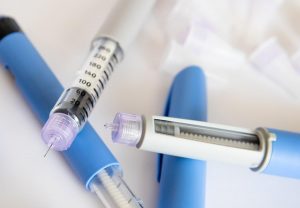One might expect identical twins to have the same health outcomes.
But it’s not just genetics that makes a notable difference in their weight and in how their genes behave, according to a new study. Exercise can alter genetic markers of metabolic disease — any of the diseases or disorders that disrupt normal metabolism.
The study could help explain exercise’s key role in health.
“The findings provide a molecular mechanism for the link between physical activity and metabolic disease,” explained study co-author Michael Skinner, a biologist at Washington State University, in Pullman.
Scientists have previously found that a majority of identical twins develop different diseases as they get older, even though they have the same genes.
Epigenetics — the study of how your behaviors and environment affect the day-to-day function of genes — may explain that, Skinner said.
“Physical exercise is known to reduce the susceptibility to obesity, but now it looks like exercise through epigenetics is affecting a lot of cell types, many of them involved in metabolic disease,” he noted in a university news release.
For this study, the researchers swabbed the cheeks of 70 pairs of identical twins, who also participated in an exercise study through the Washington State Twin Registry.
The team, led by registry director Glen Duncan, collected data on the twins at several different points between 2012 and 2019.
The researchers used fitness trackers to gauge the twins’ activity, measured their waistlines and assessed their body mass indexes (or BMI, an estimate of body fat based on height and weight). Participants also answered questions about their lifestyle and neighborhoods.
In many of the twin pairs, the individuals differed in levels of exercise, neighborhood walkability and BMI.
The more physically active siblings had lower signs of metabolic disease, measured by waist size and BMI, the findings showed.
This correlated with differences in their epigenomes, the molecular processes that influence gene expression. More active twins had epigenetic markers that were linked to lowered metabolic syndrome, a condition that can lead to heart disease, stroke and type 2 diabetes.
For those with different behavior, the lab also found epigenetic differences. The twin with a high level of physical activity, defined as more than 150 minutes of exercise a week, had epigenetic changes that correlated with reduced BMI and waist size.
The genetic regions where these changes are found are associated with more than 50 genes specific to vigorous physical activity and metabolic risk factors, the researchers reported.
Epigenetics may explain why most identical twins develop different diseases as they age, Skinner said.
“If genetics and DNA sequence were the only driver for biology, then essentially twins should have the same diseases. But they don’t,” said Skinner. “So that means there has to be an environmental impact on the twins that is driving the development of disease.”
The findings were recently published online in Scientific Reports.
More information
The U.S. Centers for Disease Control and Prevention has more on the benefits of being active.
SOURCE: Washington State University, news release, Dec. 6, 2022
Copyright © 2024 HealthDay. All rights reserved.











-300x169.jpg)




